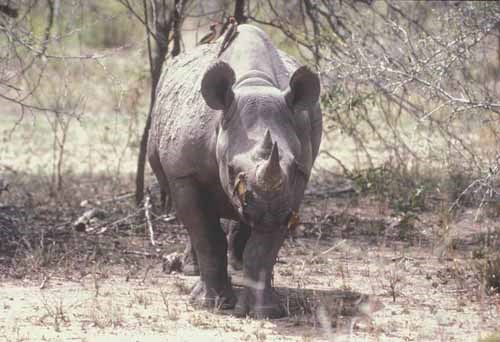Jerry Haigh is a writer and a doctor of veterinary medicine, but more than that, he is a storyteller weaving in his tales the interplay between humans and wildlife.
Haigh completed his veterinary degree in Glasgow and left only weeks later for Kenya, the country of his birth. There he worked with African wildlife, adapting his treatments to the patients under his care. One of his first was a lame giraffe. The animal was led to its stall and a rod inserted behind its thighs to limit movement. Haigh bent down, lifted the giraffe's foot with some trepidation and came away with the black muck indicative of foot rot. Using an estimate of the giraffe's weight, Haigh calculated the dose of antibiotics required. He climbed on the bottom rail of the chute, raised his arms well above his head and injected the animal in the butt through a hide so tough that in Africa it is used for making buckets. Next, Haigh and a colleague devised a modification of the treatment used for cattle - a poultice of Epsom salts. The colleague dug a hole into the floor of the stall and installed a rubber feed bowl. Filled with Epsom salts, the giraffe's foot was medicated every day when it came for its daily allotment of hay and pellets.
Haigh's books, Wrestling with Rhinos and The Trouble with Lions, describe his further adventures as a vet in the wilds of Africa. A second story starts with the statement: "A white rhino has been injuredit's been in a fight and has a badly swollen rear end." A rhino with a pain in the proverbial - not a happy thought. On arrival, Haigh found "the dejected patient". First, four doses of anesthetic - enough the vet hoped to put the patient under, then a massive amount of antibiotic and a four-gallon enema, and finally the regret that no photo was taken of the resulting pile of manure.
"I am very concerned about the mess in Africa," Haigh said. "There were 500 elephants killed just last week. There has been an increase in the slaughter of rhinos largely because the Vietnamese have decided that rhino horn is a cure for cancer. Rhino horn is now worth more than gold."
"In Canada, the polar bear is at risk. It has been the symbol of the effects of climate change," he continued. "We need to do more. I want to leave a legacy in nature for the future, for my grandchildren and great-grandchildren."
Dr. Jerry Haigh, a professor retired from the Western College of Veterinary Medicine in Saskatoon, is a never-ending source of stories about African and Canadian wildlife including the moose. That majestic animal is the subject for his latest book, Of Moose and Men: The Adventures of a Vet in Canada and the focus for his after-dinner speech at the symposium of the Yellowhead Flyway Birding Trail Association (YFBTA). The topic is timely given the increasing interest in the moose and its migration south from the boreal forest.
This year, the Symposium will be held April 28 at the Saltcoats Community Hall. The day-long event includes lunch and supper and speakers Sarah Vinge, plant conservationist, Paul Paquet, an expert on wolves and Cecil Machnee with his stories about the fur trade on the upper Assiniboine.
Further information about the Symposium is available at www.yfbta.com. The registration deadline is April 1



